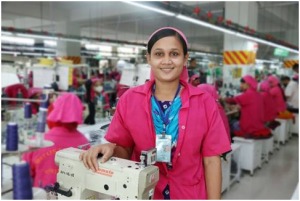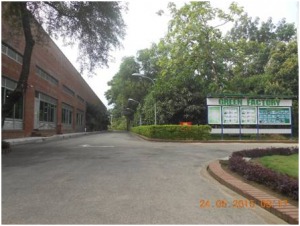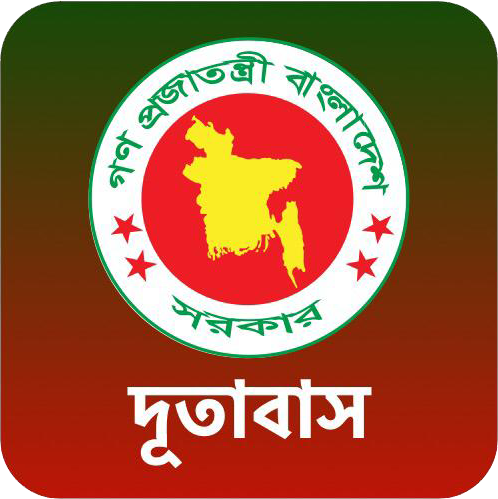About Garment Industry of Bangladesh
The readymade garments industry acts as a catalyst for the development of Bangladesh. The “Made in Bangladesh” tag has also brought glory for the country, making it a prestigious brand across the globe. Bangladesh, which was once termed by cynics a “bottomless basket” has now become a “basket full of wonders.” The country with its limited resources has been maintaining 6% annual average GDP growth rate and has brought about remarkable social and human development.
After the independence in 1971, Bangladesh was one of poorest countries in the world. No major industries were developed in Bangladesh, when it was known as East Pakistan, due to discriminatory attitude and policies of the government of the then West Pakistan. So, rebuilding the war-ravaged country with limited resources appeared to be the biggest challenge.
The industry that has been making crucial contribution to rebuilding the country and its economy is none other than the readymade garment (RMG) industry which is now the single biggest export earner for Bangladesh. The sector accounts for 81% of total export earnings of the country.

When our only major export earner “the jute industry” started losing its golden days, it is the RMG sector that replaced it, and then, to overtake it.
The apparel industry of Bangladesh started its journey in the 1980s and has come to the position it is in today. The late NuroolQuader Khan was the pioneer of the readymade garment industry in Bangladesh. He had a vision of how to transform the country. In 1978, he sent 130 trainees to South Korea where they learned how to produce readymade garments.

With those trainees, he set up the first factory “Desh Garments” to produce garments for export. At the same time, the late Akhter Mohammad Musa of Bond Garments, the late Mohammad Reazuddin of Reaz Garments, MdHumayun of Paris Garments, Engineer Mohammad Fazlul Azim of Azim Group, Major (Retd) Abdul Mannan of Sunman Group, M Shamsur Rahman of Stylecraft Limited, the first President of BGMEA, AM Subid Ali of Aristocrat Limited also came forward and established some of the first garment factories in Bangladesh.
Following their footsteps, other prudent and hardworking entrepreneurs started RMG factories in the country. Since then, Bangladeshi garment industry did not need to look behind. Despite many difficulties faced by the sector over the past years, it has carved a niche in world market and kept continuing to show robust performance.
Since the early days, different sources of impetus have contributed to the development and maturity of the industry at various stages. We learned about child-labour in 1994, and successfully made the industry free from child labour in 1995.
The MFA-quota was a blessing to our industry to take root, gradually develop and mature. While the quota was approaching to an end in 2004, it was predicted by many that the phase-out would incur a massive upset in our export.
However, the post-MFA era is another story of success. Proving all the predictions wrong, we conquered the post-MFA challenges. Now the apparel industry is Bangladesh?s biggest export earner with value of over $25.49bn of exports in 2014-15 financial year.
On its way to success the RMG industry faced a number of challenges. The biggest challenge for our apparel industry has emerged after the tragic building collapse in 2013. Many thought the building collapse would mark the end of the journey of our RMG industry. But what we have seen is the new beginning of our garment industry.For the first time in the history of global garment industry, all stakeholders have realized that ensuring safety and wellbeing workers is a shared responsibility and this feeling has inspired governments, brands, buyers, suppliers, entrepreneurs, and workers to work hand in hand to ensure a safe and sustainable garment industry. Probably this only instance in the world business that brands and buyers who compete each other come together to make an industry safe and sustainable.
The industry that has changed lives of millions of people has undergone significant transformation in terms of workplace safety and worker’s rights. National and international reform platforms -National Action Plan (NAP), Accord and Alliance- have made visible progress to ensure workplace safety. Both Accord and Alliance have completed inspection in 100% factories and the NAP will complete 100% factory inspection by this August. We note with satisfaction that less than 2% of the inspected factories have been found vulnerable and closed down immediately. Moreover, to make our progress more transparent and credible, the inspection reports of the factories are made accessible at the Fair Factory Clearinghouse (FFC) database and the websites of the relevant government department, Accord and Alliance. When all factories complete their corrective action plans (CAPs), the RMG industry of Bangladesh can obviously be regarded as the safest industry in the world.
Progress has also been made in workers’ rights. Minimum wages of RMG workers have been increased by 219% during the past 5 years. The Labor Law has been amended ensuring noticeable improvements in workers’ rights and welfare. BGMEA along with ILO and ITC are implementing training programs on worker-management relations, Occupational Safety and Health, and labor laws for both factory management and workers.
The industry is making strides in terms of environmental compliance to have a sustainable footing in the global apparel market. Many RMG factories at their own are adopting green technologies and practices. They are using cleaner technologies and producing garments in a caring and responsible way that preserves the environment for future generations. Already a number of RMG factories achieved LEED certification from US Green Building Council (USGBC) for their green practices.

The Milestones of the RMG Industry:
|
Year
|
Milestone
|
|---|---|
|
1995
|
Realistic Solution of child labor issue with ILO, UNICEF & US Embassy
|
|
2005
|
Phase out of MFA Quota
|
|
2009
|
Successfully faced Global Recession
|
|
2010
|
Ranked as the 2nd Largest Exporting Country
|
|
2013
|
Ensuring workplace safety
|






